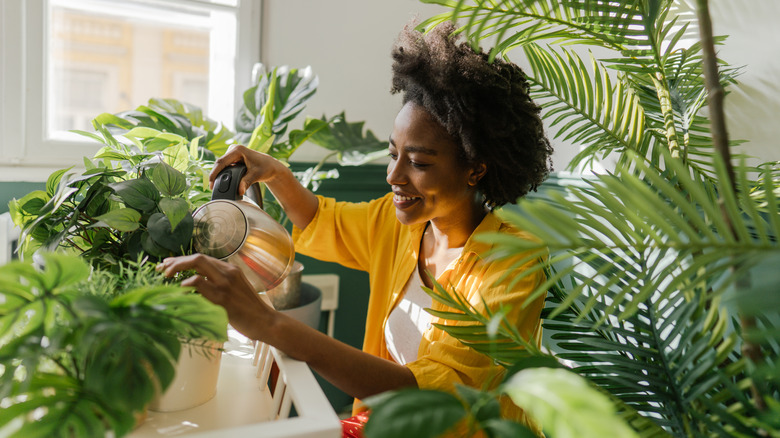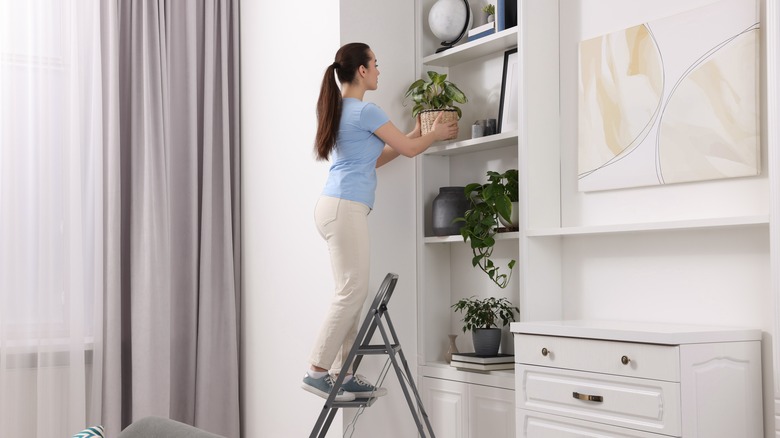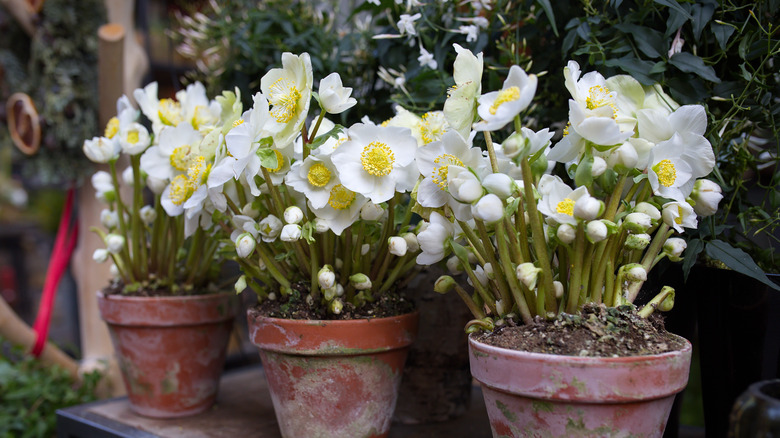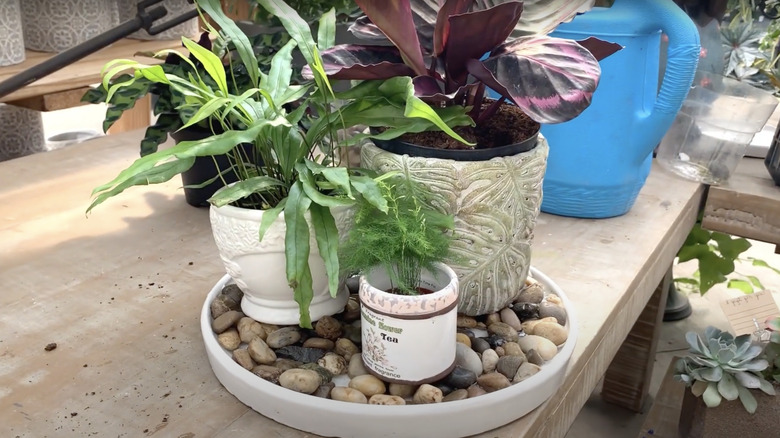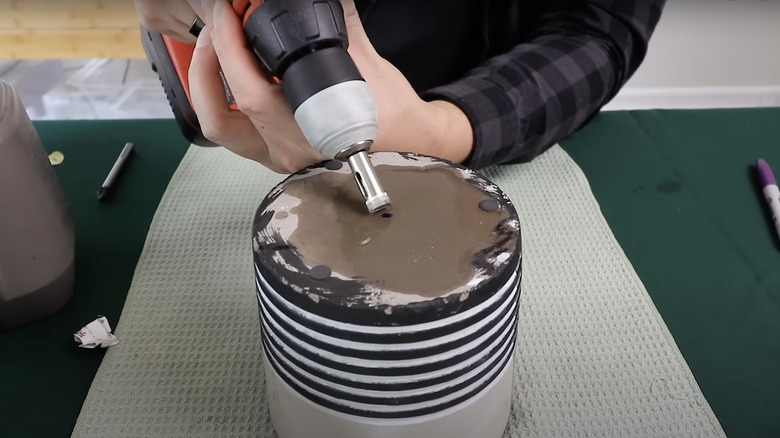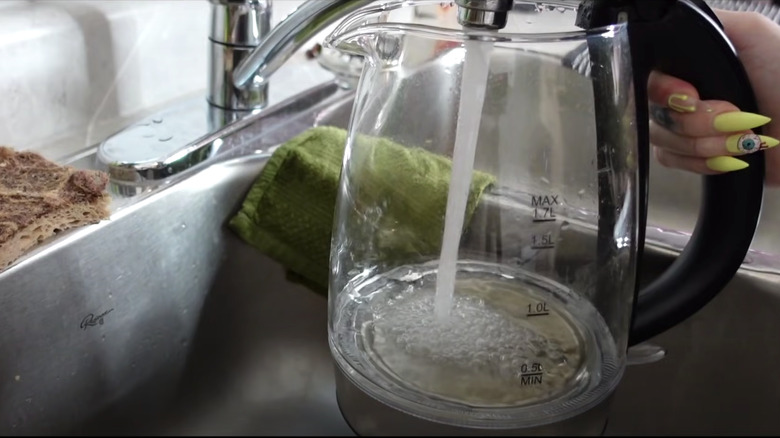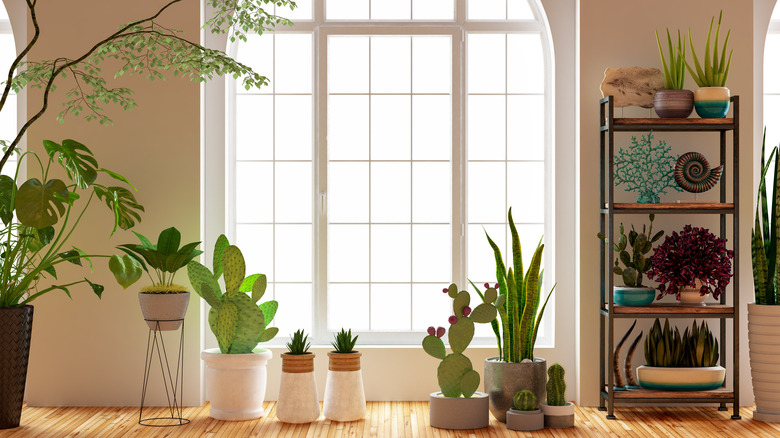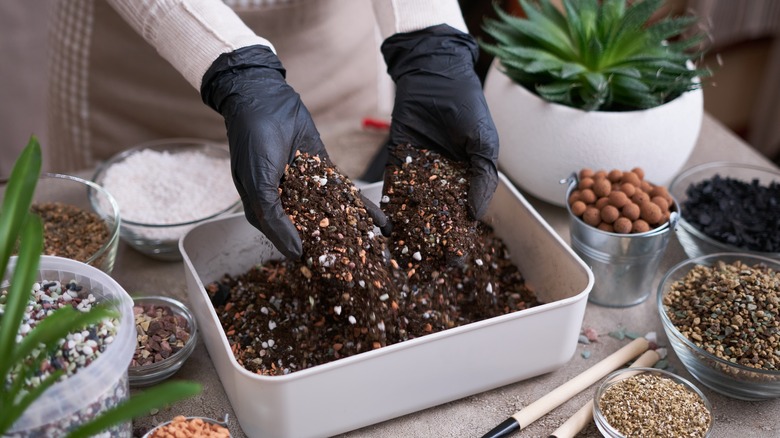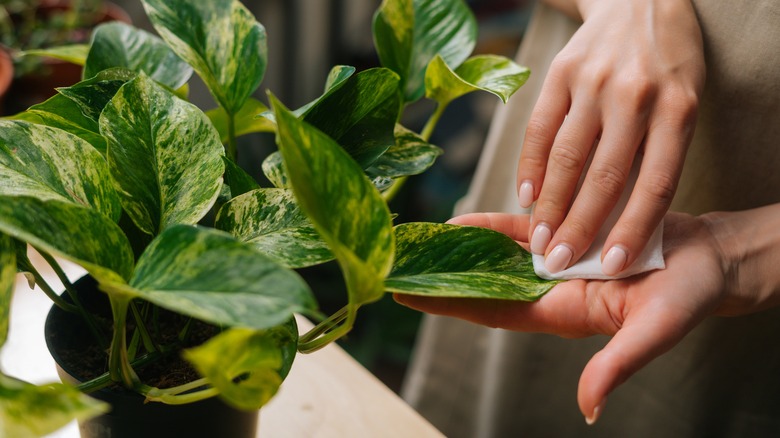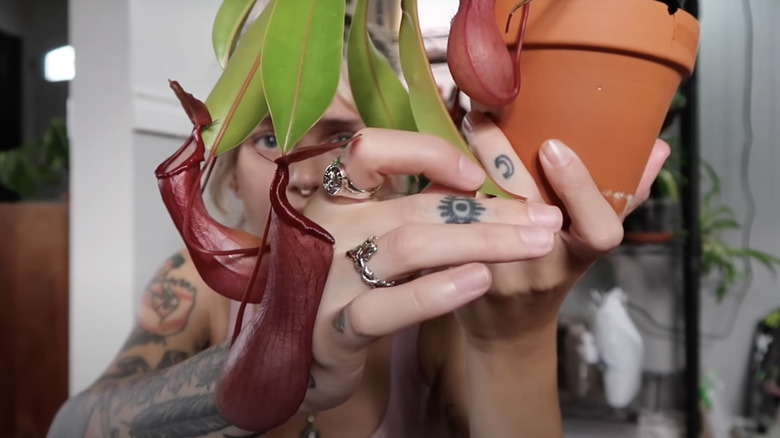Common Issues You Should Know About Before Growing Houseplants
We may receive a commission on purchases made from links.
Despite it seeming like everyone has a houseplant hobby, it's challenging to grow healthy and happy plants. Any amateur or experienced gardener can tell you that even the least finicky species need proper caretaking to flourish. You must provide water, sunlight, and a proper climate without overdoing or underdoing it. This requires a tactical approach as no one's house is the same, and every plant has different needs.
Outside plants are more self-sufficient as nature waters and fertilizes them. However, indoor plants rely entirely on their owners to check all of their survival boxes. In order to ensure a long and fruitful life for your plant collection, you must prepare to nurture them and defend them against common problems and ailments. Learn more below about some of the most prominent issues plant parents face and how you can avoid them. Knowing what to look out for will help you course-correct your own actions.
Indoor plants aren't safe from pests and insects
The common misconception is that indoor plants aren't at high risk for pest infestations. While you don't have to protect these plants from common outdoor nibblers such as rabbits and deer, they are still vulnerable to many insect species. Bugs always find a way to slip through the cracks, meaning no house is completely safe. When insects infest plants, the most noticeable changes are in the leaves. They'll change colors, develop spots, shrivel up, and fall off, slowly killing the plant in the process.
The first step to curing a bug invasion is to figure out what is tormenting your plants. There are many potential culprits, which you can identify by using this handy guide from Swanson's Nursery. Most plant parents know to watch for fungus gnats, mealy bugs, scale, spider mites, and thrips; these are the most well-known types of infestations.
In order to keep your plants safe from these infestations, there are several things you can do. First, make sure to isolate any new plants that you bring home. Whether you bought them from a reputable nursery or a big box garden center, you don't know if a pest might have hitched a ride home with you. If it did, isolating the plant from your other containers helps ensure the pest doesn't jump over to your whole collection. Make sure to keep it under quarantine for two weeks and 10 feet away from any greenery. Second, get into the habit of spraying down your plants with water once a month. Stick smaller plants under the faucet and bigger plants under your shower spray. This not only removes any dust from them but can blast any hiding bugs that may have started to infest the leaves. Lastly, you want to ensure you keep your plants as healthy as possible. Ensuring they get enough nutrients, sun, and water means they will be strong enough to quickly fight off any minor infestations.
Some plants need harsher temperatures to thrive
In theory, a moderate non-fluctuating climate seems ideal for plants. Most flowering and foliage plants prefer temperatures above 50 and below 80 degrees Fahrenheit. Although most plants thrive in these conditions — and it reduces their risk of stress, leaf drop, and stunted growth — this rule does not apply to everything.
Certain species need exposure to natural climate conditions to grow and flower as nature intended. An example is miniature roses, which need to experience a sudden cold snap to bloom. This means you will need to take it outside during a frost in order to keep it happy and healthy. On the other hand, coreopsis, zinnia, and mandevilla flowers thrive best in temperatures between 70 and 80 degrees, meaning they may prefer balmier conditions than you keep in your cool and comfortable home. That means you should either not buy them or prepare to store them in a warmer room with higher humidity. Knowing these preferences, beginner gardeners should choose plants that prefer temperate climates, such as pothos, peace lilies, spider plants, and rubber plants.
A plant's recommended humidity may not be comfortable for your household
Balancing your home's indoor climate to certain humidity levels reduces allergens, lowers electric bills, prevents condensation, and overall keeps household members and pets comfortable. Throughout the year, humidity levels should hover around 50% and below to keep you, your family, and your roommates happy. However, most houseplants prefer humidity levels between 60% to 80%, which can be pretty difficult to achieve in a house or apartment.
Luckily, there are ways to keep your houseplants at these levels without sacrificing the well-being of your entire home. Try grouping your similar foliage together— plants release moisture in a process called transpiration, naturally making the air around them more humid. Purchase a small humidifier to keep near your plant setup, or place your pots on trays filled with pebbles and water to naturally add moisture to the air. Also, keep them in damper rooms, such as bathrooms and kitchens; just remember these rooms must be well-lit.
Accidentally overwatering is a much higher risk
A lot of humidity is good, but too much standing water isn't. Overwatering plants is always a risk, but it's more likely to happen with potted plants. Outdoor plants that grow in free soil are harder to overwater since the liquid flows horizontally and downwards, evenly dispersing throughout the dirt and deep into the ground. In contrast, potted plants only have a few inches of soil to work with, and all water is contained within the pot, meaning the moisture sits and has nowhere to go.
This is why many indoor gardeners rely on terracotta pots to house their greenery collection. Terracotta is a clay-based earthenware that is porous, which means the water can better evaporate. Drill a drainage hole in their bottoms and put these pots on trays or in larger pots, giving water more space to flow. Doing so will prevent roots from being oversaturated, turning to mush, and rotting — one of the most common culprits behind houseplant death.
Watering with high-mineral tap water burns sensitive foliage
You already know watering can be a tricky business, and you should be concerned with the quality as much as the quantity. When plants are given tap water that contains chlorine, fluoride, or limescale, they mature slower than expected, develop a crusty white buildup in their soil, or grow brown-tipped leaves.
Tap water can be made safe for watering if you make sure it has low mineral content. Solve the problem by purchasing purified or distilled water from the grocery store, or filling a bowl or bucket with water in advance. If you do the latter, let the container sit out for about 24 hours, allowing the chemicals to evaporate naturally before pouring its contents on your plants. If you want a more direct solution, install a water softener. This expensive solution benefits the entire home plumbing system, even outside plant care. For a few hundred to thousand dollars (the price for labor and materials varies depending on your location), a plumber connects a machine to your pipelines. The device filters out minerals before sending water to your sinks, tubs, showers, and other water-based fixtures.
Your windows might not get enough sunlight
Some things in life are truly out of our control, and one of those things is how much natural sunlight your home receives. The most noticeable sign plants aren't getting enough light is when their growth becomes leggy and has gaping spaces between leaves. You'll notice they grow in a certain direction, likely because they're reaching towards areas of more concentrated brightness. Plants with insufficient sunlight also mature slowly and have smaller, paler leaves.
If possible, you should find ways to expose your plant to brighter areas throughout the day. Move them closer to windows, pull aside curtains, and roll up blinds. Cut down or trim outside foliage blocking your windows, or move your plant to a south-facing window with more consistent sun throughout the day.
People who live in apartments or condos are more limited in what they can do. They usually don't have windows on all sides, or nearby trees and buildings may shadow their windows. In this case, look for grow light strips for as cheap as $5.99 on Amazon. These light fixtures are explicitly made for growing plants and use red and white LEDs that emulate sunlight. Tape them to a surface above or next to your plants to give them the necessary resources to complete photosynthesis.
There is no natural fertilization indoors
Outdoor plants engage in symbiotic relationships with nature and are fertilized by animals and natural matter around them. The natural fertilization process provides plants with essential nutrients, like nitrogen, phosphorus, and potassium (NPK), which they need to grow and fend off diseases. Unfortunately for indoor plants, they don't have access to the natural fertilization process, so people must do the work for them.
Luckily, many houseplants have similar needs, so you can use an all-purpose fertilizer on most of them. It will be labeled as "10-10-10" on the bag, which means it has an even ratio of NPK. The only time you would need to tweak the ratio is if your plant had too little or too much of one of those compounds. You can learn that by testing the soil with a kit, such as this one from Amazon for $18.
Most people use liquid or granular fertilizer. Liquid is more immediate but needs to be re-applied more often, while granular fertilizer breaks down slowly. It's recommended to fertilize every two weeks to four months, depending on the formula and current season. The direction label of your particular product will tell you how often you should use it.
Leaves need routine dusting to absorb sunlight
Dust is all around us, but it doesn't gather outside quite like it does inside your home. Outside, the wind blows and rain falls, naturally dispersing the fine particles so they don't create buildup. On the contrary, there is no wind or rain in your home, meaning there's no natural process washing dust away from plants. These minuscule particles may seem harmless but impede plant growth. When the buildup becomes too thick, the coating of dead skin cells, dirt, and pollen blocks sunlight, inhibiting leaves from performing photosynthesis. Without proper sunlight, plants wither and die, making it imperative that you do your part to routinely dust away the layer encasing indoor plant leaves.
Dusting plants takes no special skills or materials, just gentle handiwork. On typical smooth leaves, wipe away visible debris with an electrostatic or soft microfiber cloth, dipping it lightly in water if necessary. Do not use water to wash hairy leaves or succulents, for you may accidentally cause spots in the foliage or damage the fragile thorns. With these sensitive plants, use a goat hair leaf cleaning brush or a bottle of compressed air.
If dust accumulates faster than you can keep up with, there are actions you can take to reduce it. The likely cause behind excessive debris is usually your HVAC system. Hire a contractor to ensure the filters, air ducts, and machinery are cleaned and in good condition. They may recommend installing an air purifier if you live in a state with high dust levels, such as those on Molekule's list of most polluted locations.
Carnivorous plants require care unlike other houseplants
This is a more niche issue that only applies to gardeners with a carnivorous plant collection of venus flytraps, pitcher plants, or sundews. Carnivorous plants aren't often kept indoors because they require special care and attract insects. However, many people adore these plants as interior accents.
Earlier in this article, terracotta pots were encouraged to prevent overwatering. Carnivorous plants are the exception to this rule, and you should place them in plastic pots, not clay-based earthenware. That's because terra cotta slowly releases minerals into the soil, but these minerals are harmful to meat-eating plant life.
You should also avoid using tap water entirely unless you take the time to distill it yourself. Even softened tap water contains enough minerals to burn Venus flytraps and the like. Only serve these sensitive flowers with distilled water, which can be purchased at local grocery stores or filtered at home. If you want to go the homemade route, it's a somewhat tedious process. You begin by putting a pot of water on the stove. Place a smaller bowl in the water, ensuring it floats and doesn't touch the bottom. Once the water starts to boil, put an upside-down pot lid filled with ice on top. Mixing steam with an icy-cold lid will create condensation, which will drip back down into the bowl. This water will be purified enough to nurture your vegetation.
